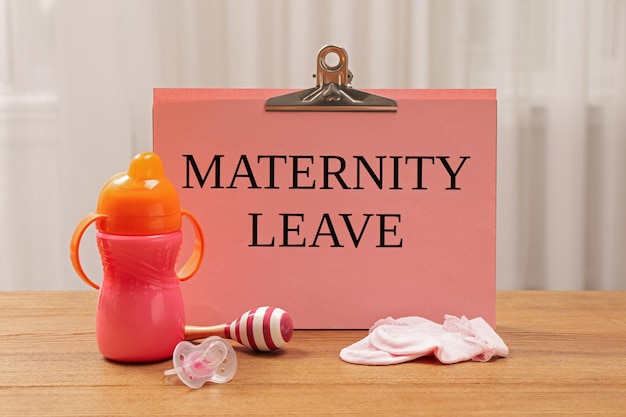Maternity Leave Notice: Ensuring a Smooth Transition

Maternity leave is a significant milestone for expecting mothers, allowing them time to bond with their newborns and recover from childbirth. However, for a smooth transition and to ensure both the employer and employee are adequately prepared, it’s crucial to provide a formal maternity leave notice. Let’s delve deeper into the importance of this notice and how to craft an effective one.
Importance of Providing a Maternity Leave Notice
Providing a maternity leave notice is not just a courtesy; it’s a legal requirement in many jurisdictions. It allows employers to plan for the employee’s absence, redistribute workload, and arrange for temporary coverage if necessary. Additionally, it ensures that the employee’s rights are protected, including job security and access to benefits during their absence.
Understanding Maternity Leave Laws
Before drafting a maternity leave notice, it’s essential to understand the relevant laws and regulations. In the United States, maternity leave is governed by both federal and state laws. While the Family and Medical Leave Act (FMLA) provides eligible employees with up to 12 weeks of unpaid leave for childbirth and bonding, some states have additional provisions and benefits.
Federal Regulations
Under the FMLA, eligible employees are entitled to 12 weeks of unpaid leave for the birth and care of a newborn child. To qualify, employees must work for a covered employer and have worked a minimum number of hours during the preceding 12 months.
State Regulations
Many states have their own maternity leave laws that may provide additional benefits or protections beyond the FMLA. These laws may extend the duration of leave, provide paid leave options, or offer job protection for a broader range of employees.
Components of a Maternity Leave Notice
A well-written maternity leave notice should include essential information to facilitate a smooth transition. This includes:
- Employee Information: Full name, employee ID, and department.
- Expected Date of Leave: The anticipated start date of the maternity leave.
- Duration of Leave: The length of the leave, including any planned extensions.
- Contact Information: How the employer can reach the employee during their leave, if necessary.
Crafting an Effective Maternity Leave Notice
Crafting an effective maternity leave notice requires clarity, compliance, and sensitivity. It should be written in clear and concise language, ensuring that both the employer and employee understand their rights and responsibilities. Additionally, it must comply with legal requirements to avoid any potential disputes or issues down the line.
Sample Maternity Leave Notice Template
[Sample Maternity Leave Notice Template] [Employee Name] [Employee ID] [Department] [Date]Dear [Employer/HR Manager],
I am writing to inform you of my intention to take maternity leave in accordance with [Company Name] policies and applicable laws. My expected date of leave is [Date], and I anticipate being on leave for [Duration].
During my absence, I can be reached at [Contact Information]. Please feel free to contact me with any questions or concerns.
Thank you for your understanding and support during this time.
Sincerely, [Employee Name]
Best Practices for Employers
Employers play a crucial role in supporting employees during maternity leave. Some best practices include:
- Timely Communication: Respond promptly to maternity leave notices and provide any necessary information or support.
- Confidentiality: Respect the employee’s privacy and confidentiality regarding their maternity leave.
- Supportive Environment: Create a supportive work environment that encourages work-life balance and accommodates employees’ needs during maternity leave.
FAQs Related to Maternity Leave Notice
Q: What should be included in a maternity leave notice? A: A maternity leave notice should include employee information, expected date of leave, duration of leave, and contact information.
Q: Is it mandatory to provide a maternity leave notice? A: In many jurisdictions, providing a maternity leave notice is mandatory to ensure legal compliance and facilitate a smooth transition.
Q: Can an employer deny maternity leave based on a poorly written notice? A: While a poorly written notice may cause confusion, employers cannot deny maternity leave if the employee meets eligibility requirements and provides the necessary information.
Q: How far in advance should a maternity leave notice be submitted? A: It’s recommended to submit a maternity leave notice as soon as possible to allow for proper planning and coordination.
Q: What happens if an employee fails to provide a maternity leave notice? A: Failure to provide a maternity leave notice may result in delays in processing the leave request or confusion regarding the employee’s absence.
